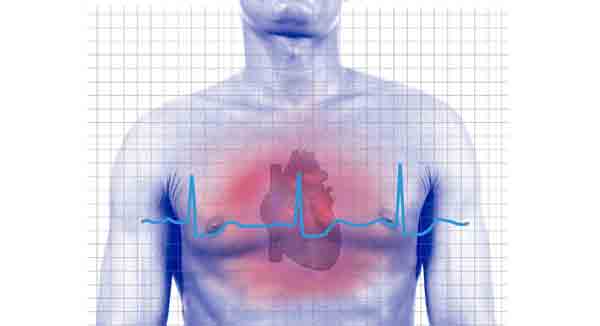
Far from the Heart, Watch for Peripheral Artery Disease (Op-Ed)

Dr. Michael Go is a vascular surgeon at The Ohio State University Wexner Medical Center. He contributed this article to LiveScience's Expert Voices: Op-Ed & Insights.
Are you doing what you can to avoid buildup of fat in your arteries? Simple lifestyle changes could be all you need to avoid peripheral artery disease (PAD). Nearly ten million people in this country are suffering from PAD. While it is common for people to know that a buildup of the plaque in the arteries around the heart can lead to a heart attack or stroke, fewer people know that the same buildup in the arteries outside the heart can also have devastating effects on health.
PAD, also called peripheral vascular disease, is a narrowing of the peripheral arteries (arteries outside the heart). It is a common disorder of the circulatory system. PAD is usually caused by atherosclerosis, a buildup of fatty deposits in artery walls that leads to restricted blood flow. Atherosclerosis affects the heart and can affect arteries throughout the body.
One of the problems with this disease is that people with PAD may not experience symptoms during the early stages. The most common early symptom is intermittent discomfort in the legs during activity, including claudication (cramping or pain in the calves or thighs when walking), tightness, heaviness, cramping and/or weakness. With more advanced stages of PAD, symptoms may include critical limb ischemia (constant pain in your feet or toes even when you are at rest) and/or painful sores on your feet or toes (left untreated, these sores can become dead tissue, also known as gangrene).
PAD often goes undiagnosed. It is important to inform a physician if you have symptoms of PAD because the condition can lead to increased risk for heart attack and stroke.
PAD is frequently detected in people who have coronary artery disease, which is caused by reduced blood flow due to plaque buildup in the arteries. There are steps you can take to lower your risk of developing PAD.
These include:
Sign up for the Live Science daily newsletter now
Get the world’s most fascinating discoveries delivered straight to your inbox.
- Quit smoking
- Maintain a healthy weight
- Exercise regularly
- Maintain healthy blood cholesterol levels
- Control your blood pressure
- Manage your diabetes
There are different ways to treat PAD. The first step would be to see a vascular surgeon, a specialist who is able to treat PAD with either medications, minimally invasive procedures, or if necessary, surgical procedures. The surgeon will first determine if lifestyle changes and the addition of medication would relieve symptoms. Medications to lower blood sugar, blood pressure and blood cholesterol may be prescribed. Other medications include those that improve blood flow and relax blood vessel walls.

If this therapy is not working, there are many technologies for minimally invasive treatment.
- Angioplasty and stenting: A balloon-tipped catheter is inserted into a blocked vessel and inflated, then a small mesh tube is inserted to keep the vessel open;
- Mechanical atherectomy: A device is threaded through a catheter to remove plaque in the blocked area;
- Laser atherectomy: Removal of plaque from a blocked artery with the use of a laser;
- Pharmacomechanical thrombolysis: Dissolving a blood clot with the use of thrombolytic (drug) therapy and a catheter that removes the clot from the affected vessel
Bypass surgery is for patients with PAD that cannot be treated by less invasive, nonsurgical treatments. It may involve direct surgical removal of plaque or placement of bypass grafts to redirect blood flow around blocked arteries.
For patients who cannot be treated with traditional methods, The Ohio State University Wexner Medical Center participates in ongoing clinical trials investigating new treatments for certain cases of peripheral artery disease.
The views expressed are those of the author and do not necessarily reflect the views of the publisher. This version of the article was originally published on LiveScience.
Measles has long-term health consequences for kids. Vaccines can prevent all of them.
100% fatal brain disease strikes 3 people in Oregon









